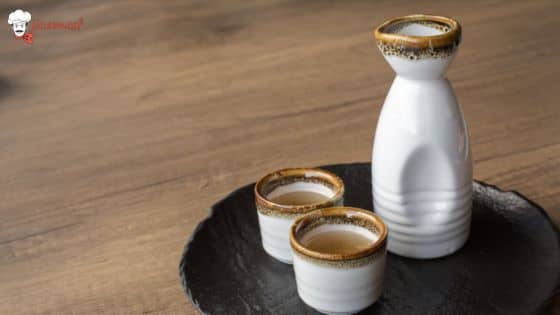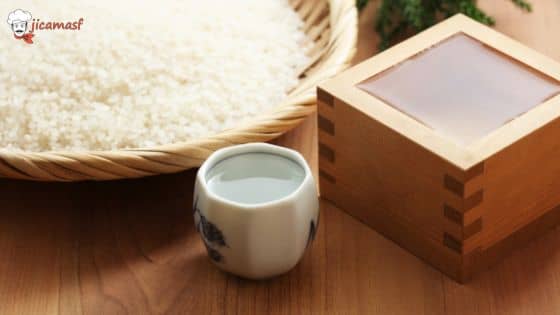As an Amazon Associate, I earn from qualifying purchases

Best Sake for Cooking, When it comes to elevating the flavors of your culinary creations, incorporating sake into your cooking can be a game-changer. Sake, a traditional Japanese rice wine, offers a unique depth and complexity that can enhance a wide range of dishes. However, choosing the right sake for cooking requires some consideration. In this guide, we will explore the best types of sake to use in your recipes, providing you with the knowledge to make informed decisions and take your cooking to new heights. Whether you’re a seasoned chef or an enthusiastic home cook, discovering the best sake for cooking will undoubtedly add an extra layer of flavor and authenticity to your dishes.
What is sake and how can it be used in cooking?
Sake, often known as Japanese rice wine, is a traditional alcoholic beverage made from fermenting polished rice. Rich in umami, sake serves as more than just a drink and can be a fantastic ingredient to add depth and enhance the flavor profile of various dishes.
Whether used in marinades or sauces or as a secret weapon in braising and steaming techniques, sake brings an unrivaled aromatic quality to your culinary arrangements.
Top 10 recommendations for the best sake in cooking
While browsing different sake options available, there are a few important factors to consider before purchasing the right brand for your kitchen. Here are our top four recommendations for cooking:
Gekkeikan Sake:
A well-known and widely available brand, Gekkeikan Sake has a balanced flavor, making it ideal for incorporating into a wide array of recipes. Its high-quality Japanese rice and use of natural, locally sourced water bring out the distinct taste of each ingredient in a dish.
Ozeki Sake:
Ozeki Sake offers various flavors with moderate sweetness and acidity, making it a popular choice for those looking to enhance dishes requiring tailored tastes. Ranging from robust earthy flavors to more delicate fruity undertones, Ozeki Sake has options suited to recipes from heavy meat-based dishes to mild, seafood-focused plates.
Sho Chiku Bai Sake:
Bolstered by its supreme quality and mild, refined taste, Sho Chiku Bai is among the globally favored choice. Offering both superior and wild range options, the Sho Chiku Bai Mild complements subtle ingredients such as steamed fish, while the more robust variant is perfect for grilled meats.
Kikkoman Ryorishi Sake:
Specifically made for cooking purposes, Kikkoman Ryorishi Sake is slightly salted, conveniently eliminating the need for additional seasoning in dishes. Free from artificial flavors, and colors, and with lower alcoholic content, it’s excellent for home cooks looking to add authentic umami tastes to their creations.
Japanese Kikusui Junmai Ginjo
: Another excellent option for cooking is Japanese Kikusui Junmai Ginjo, with its balanced aroma, fruity flavor, and mellow richness. The medium-bodied sake pairs exquisitely with various dishes, from traditional Japanese cuisine to fusion styles, and can enhance rich, creamy textures as well as add an elegant touch to light, delicate recipes. Give Japanese Kikusui Junmai Ginjo a try when making sushi, sashimi, or tempura, or explore its potential use in creative sauces and desserts.
White Peach Yuzu Japanese Sake

: One more popular option worth considering is White Peach Yuzu Sake, as it combines the refreshing and distinct flavors of yuzu citrus and white peach. With its fruity and sweet taste balanced by mild acidity, this variety of sake can work wonders in dishes featuring fruit or dessert applications. Perfect for elevating a summer fruit salad or even adding to a sorbet for a unique twist, White Peach Yuzu Sake can transform your dessert options into flavorful masterpieces.
Japanese Ozeki Sparkling Hana Awaka Peach
: Introducing a lively and bubbly alternative, Japanese Ozeki Sparkling Hana Awaka Peach delivers a delicately sparkling texture, fruity aroma, and lightly sweet profile that makes it an ideal companion to creative culinary ventures. With its gentle fizz, this sake can help evoke a sense of festivity when mixed into festive drinks or drizzled on desserts, including fruit compotes and light pastry creations. Experiment with Ozeki Sparkling Hana Awaka Peach to see how the possibilities of its sweet, effervescent character can be infused into your dishes.
Nigori CloudySake

: Nigori Cloudy Sake is yet another unique sake choice, featuring a rich body due to its unfiltered nature. The residual rice particles give Nigori Cloudy Sake its thicker texture and creamy, milky appearance. With a sweet and smooth taste, this variety performs excellently in both traditional Japanese recipes and Western-style dessert applications. Test its versatility by incorporating it into sweet desserts, such as panna cottas or puddings, or drizzle over grilled fruit for an added layer of exceptional flavor.
Morita Premium Organic Cooking Sake
: For a more eco-conscious choice, Morita Premium Organic Cooking Sake is a fantastic option to take advantage of organic ingredients in your culinary preparations. Produced using only organic Japanese rice and natural spring water, this sake ensures a clean and pure taste that enhances the overall quality of your dishes. With its moderate flavor and subtle richness, Morita Premium Organic Cooking Sake is perfect for a variety of dishes, ranging from seafood to vegetable stir-fries as well as marinades and sauces. Opt for this organic cooking sake when aiming for mindful consumption without compromising on delicious, authentic umami taste.
Hinode Ryori Shu Cooking Sake
: Last but not least, Hinode Ryori Shu Cooking Sake is a versatile and dependable choice for cooking applications. Its mild and savory flavor is perfect for incorporating savory dishes, as well as enhancing the umami flavors in your ingredients without overpowering them. By using it in stews, stir-fries, and braised dishes, you’ll notice an improvement in complexity and depth of flavor, making this cooking sake a staple in any kitchen. Give it a go in adventurous fusion meals or classic comfort food recipes, and witness how Hinode Ryori Shu can enhance and elevate your culinary creations.
Top 4 Sake Set For You
Product Name | Brand | Material | Capacity | Price |
Japanese Kutani ware | Hagiyaki | Porcelain, Paper | 350 Milliliters | |
Tanuki Raccoon Sake Set | MIYA | Ceramic | 10 Fluid Ounces | |
Japanese Sake Set with Warmer | i2 Home | porcelain | N/A | |
280ML Sake Bottle Set | CZMAHODE | Cold sake glass | 280ml |
Sake meters and taste characteristics
While exploring new sakes for cooking purposes, you may encounter descriptions referring to sake’s “Sake Meter Value” (SMV) or “Nihonshu-do.” This numerical scale explains a sake’s sweetness or dryness, which is helpful when selecting the perfect match for your dish.
Make sure to consider the SMV when browsing sakes, as it can guide you in understanding the distinct tastes each option brings. Generally, a higher positive value (+5 or above) indicates a dry and crisp taste, while a lower value (-2 or below) means the sake is on the sweeter side.
Here is a brief overview of the taste characteristics present on a sake meter:
- Dry and sharp (SMV +5 to +10): These sakes have high acidity and strong taste, ideal for pairing with bold, spicy, and rich dishes.
- Balanced (SMV 0 to +5): Exhibiting moderate acidity and mellow taste, these sakes provide a well-rounded aroma suitable for dishes with diverse flavors, like sushi or tempura – Semi-sweet (SMV -2 to 0): With a subtle sweetness and lighter taste, semi-sweet sakes complement more delicate dishes, such as salads, mild-flavored vegetables, or white fish.
- Sweet (SMV -5 to -2): Sweet sakes have a distinct and pleasing sweetness, often used in dessert applications or recipes spotlighting fruit-based flavors.
Armed with this knowledge about sake meter values, you can now make mindful decisions for determining the best type of sake to elevate the profile of your dishes and ensure a truly memorable gastronomic experience. Happy cooking and, most importantly, enjoy the captivating world of sake-infused culinary delights!
Tips on using sake in cooking
- Always choose a sake with moderate flavor profiles. This ensures the taste won’t overpower other ingredients when added to dishes.
- When substituting sake for white wine in a recipe, keep in mind that the natural sweetness and umami taste may vary and require adjustments.
- Try using sake in dishes like shabu-shabu, teriyaki sauce, yakitori marinade, soups, and stews, and even as a homemade dressing ingredient for added fragrance
- Sake’s ability to tenderize meat makes marvelous marinades that enhance the flavors of your choice cuts.
Conclusion
Incorporating high-quality sake into your cooking repertoire can enhance the flavor profile of your culinary creations dramatically. Evaluate how different sake options can align best with your required palate, considering factors like additional seasonings, ingredient selections, and matched flavors to bring out the best in your dishes. Make sure to monitor your additions accurately for optimal results.
Now that you are informed about choosing the best sakes, it’s time to elevate your kitchen skills and surprise even regulars with a unique splash of fragrance and unmistakable umami flavor that only this incredible Japanese rice wine can offer!
Leave a Reply